In this guide, we’re going to dissect the bathroom layout rules and principles behind a well-crafted bathroom, ensuring that each square foot serves its purpose beautifully.
The bathroom is no longer the overlooked corner of your home. It’s the haven where you start and end your day, a retreat for relaxation, and, unequivocally, a reflection of your personal style. From the tiniest powder rooms to the palatial master baths, every inch of space should be designed with intention.
Get this right, and you’ll savour a seamless flow that’s functional, aesthetically pleasing, and adds value to your property. Get it wrong, and you may find yourself redoing your layout sooner than you think.
Understanding the Foundation of a Great Bathroom Layout
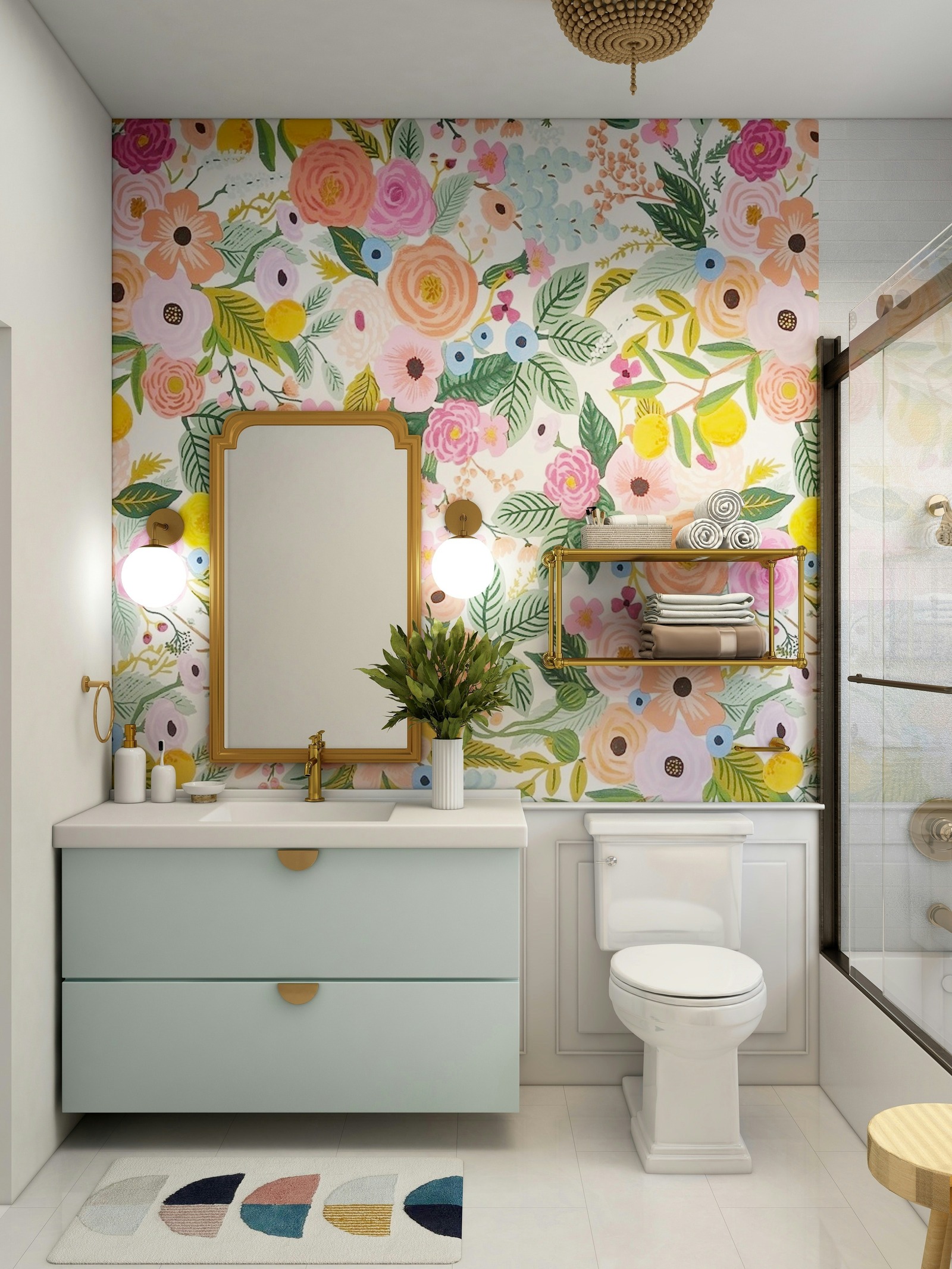
An artful bathroom layout is more than just a pleasing arrangement of fixtures; it’s a harmonious combination of spatial design, movement flow, storage integration, and atmospheric enhancement. When these elements come together, they create a space that not only serves its basic functions efficiently but also elevates your bathing experience to new heights.
The Impact of Layout on Daily Function
Consider how a bathroom layout influences your daily routine. Is there enough space to move around comfortably, or do you constantly bump into things? Are your essentials readily accessible, or do you find yourself digging through drawers? A thoughtful design ensures ease of use, making mundane tasks a little more enjoyable.
Aesthetics and Property Value
Beyond function, aesthetics is where the magic happens. A beautiful bathroom layout isn’t just a delight for the eyes—it’s an investment that can significantly boost your home’s value. Potential buyers are drawn to bathrooms that are well-appointed, so it’s crucial that the design is both in vogue and timeless.
Key Principles of Bathroom Layout
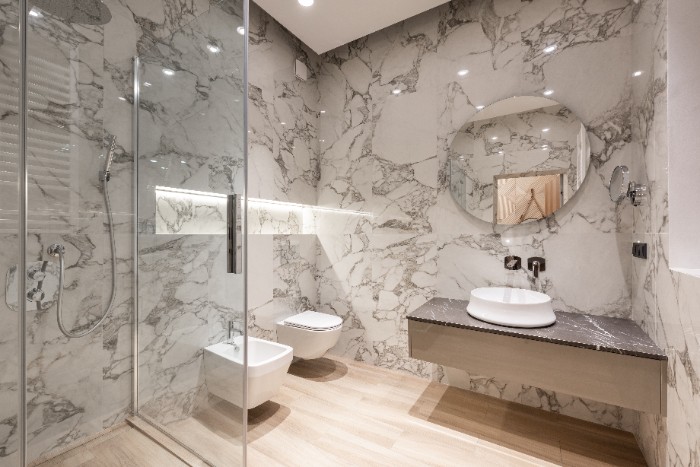
To craft a layout that stands the test of time, there are several principles you should keep in mind. These guiding rules form the backbone of an efficient and stylish bathroom layout plans .
Space Planning – Floor Space
Effective space planning is key when dealing with the typically limited floor space of most bathrooms. It’s about finding the right balance between the essentials and leaving enough ‘breathing room.’ This is where you strategize to ensure that every fixture’s placement is optimized, contributing to a spacious and flowing environment.
Traffic Flow – Bathroom Layout
How you move through the space is a critical consideration. Clear traffic paths should guide you effortlessly between the shower, the vanity unit and the toilet, accounting for the bathroom door swings and spatial requirements. No one enjoys a bathroom obstacle course during the morning rush.
Storage Solutions
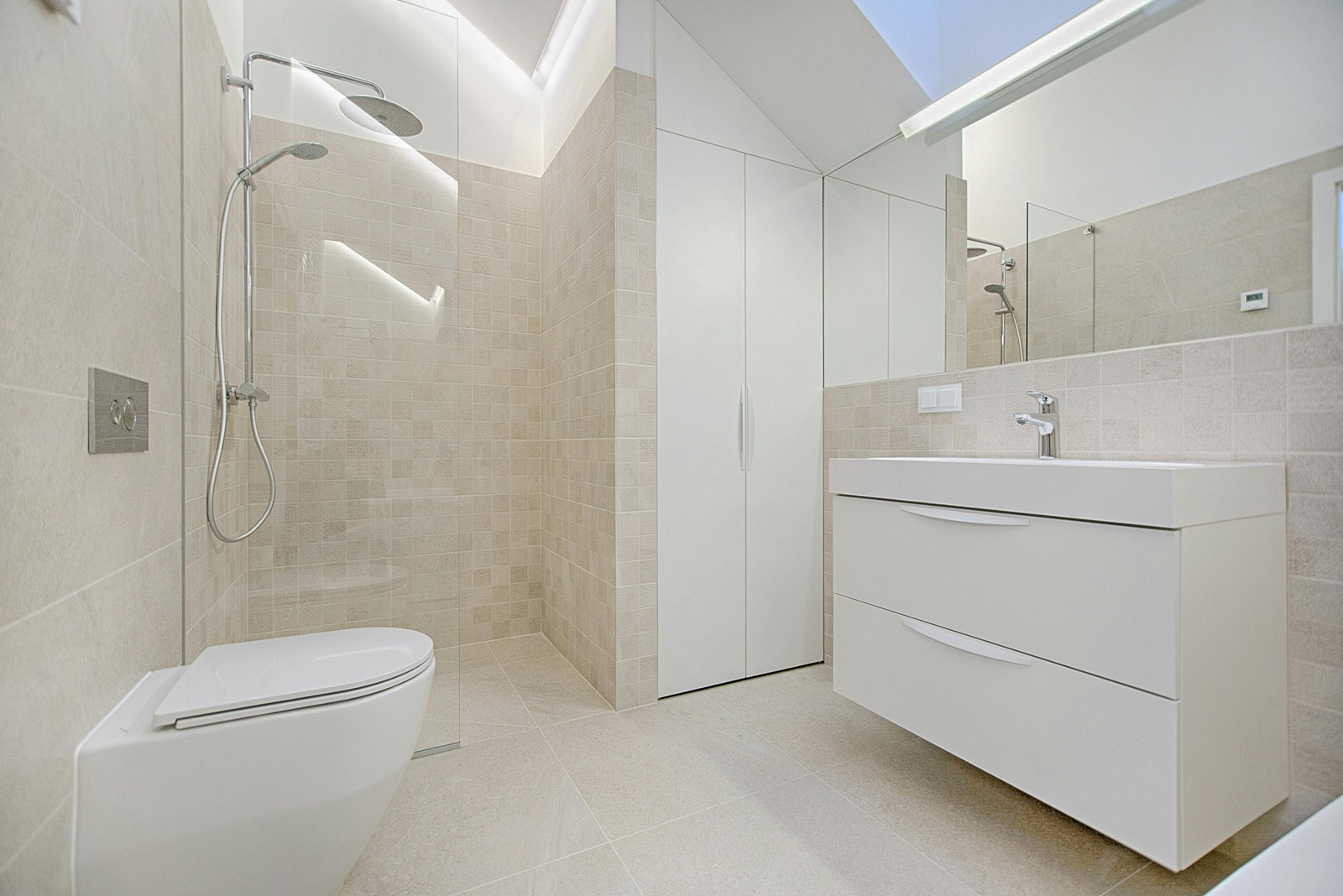
Great bathroom storage design minimizes visible clutter and maximizes storage options. Whether it’s cleverly integrated bathroom furniture such as in-door shelving or vanity unit cabinets suited to your storage needs, smart solutions are the unsung heroes of an organized bathroom.
Light Fixtures and Ventilation
Lighting is the unsung hero of every room design and it’s never more crucial than in the bathroom. From the brightly lit mirror for grooming to soft accent lighting for ambiance, layering light sources will ensure your bathroom shines—figuratively and literally. Natural light bathrooms are a bonus.
Ventilation, often neglected, is equally important, helping to maintain air quality and prevent moisture-related such as mold and mildew.
Common Bathroom Layout Mistakes to Avoid
The road to a perfect bathroom layout is laden with pitfalls. Here are some common mistakes that can derail your design.
Overcrowding with Unnecessary Fixtures and Furniture
Less is often more in bathroom design. Every element, from the bidet to the towel rack, should earn its place. Be wary of adding fixtures or furniture just because you have the space for them.
Neglecting Plumbing and Electrical Considerations
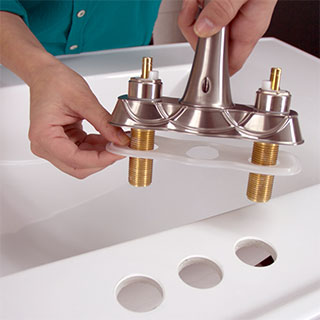
The `behind-the-scenes’ infrastructure of your bathroom is as important as what meets the eye. Ignoring these crucial elements can lead to costly redesigns down the line.
Ignorance of Personal Needs and Lifestyle
A bathroom that works well for one person’s daily routine may not work for another’s. It’s essential to tailor your layout to your specific needs and habits.
Layout ideas for Different Bathroom Sizes and Shapes
Every bathroom has its own unique set of challenges and opportunities. We break down some of our best design tips for the most common bathroom sizes and shapes depending how much space you have.
Small Bathrooms: Making the Most of Every Inch
Compact spaces can pack a punch with the right design approach. Clever storage, scaled furniture, and strategic placement can make a small bathroom feel surprisingly expansive.
Large Bathrooms: Strategies for Filling Spacious Areas
Don’t be daunted by a large bathroom; see it as a canvas for your most extravagant design dreams. But remember, with great space comes great responsibility to utilize it wisely.
Walk in Shower : Luxury and Practicality in One
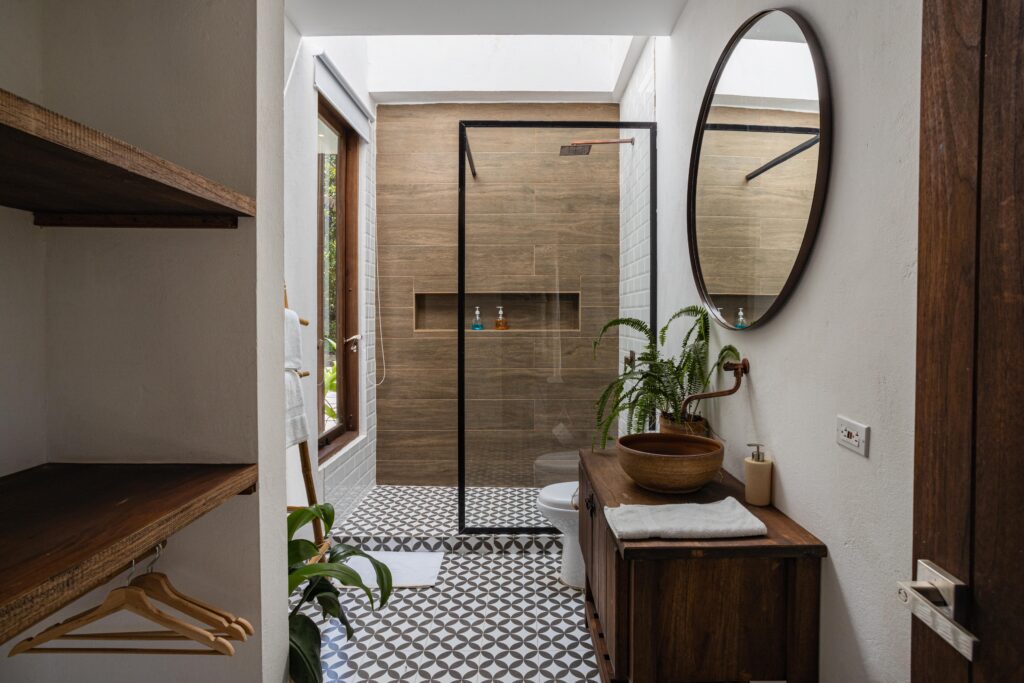
A walk-in shower is an increasingly popular addition to modern bathroom layouts. With its sleek, minimalist design, it adds a touch of luxury while also being highly practical for people of all ages.
Shower Screens : Creating a Spa-like Retreat
If you want to add an element of indulgence and luxury to your bathroom, consider installing a shower screen. These modern glass enclosures not only add beauty to your space but also help contain splashes and create a sense of privacy.
Corner Bathtubs: Creative Solutions for Awkward Spaces
For bathrooms with awkward or limited space, a corner bathtub can be a smart solution. They are available in a variety of sizes and shapes, including triangular or oval, making them both functional and stylish.
Freestanding Bath : The Focal Point of Your Layout
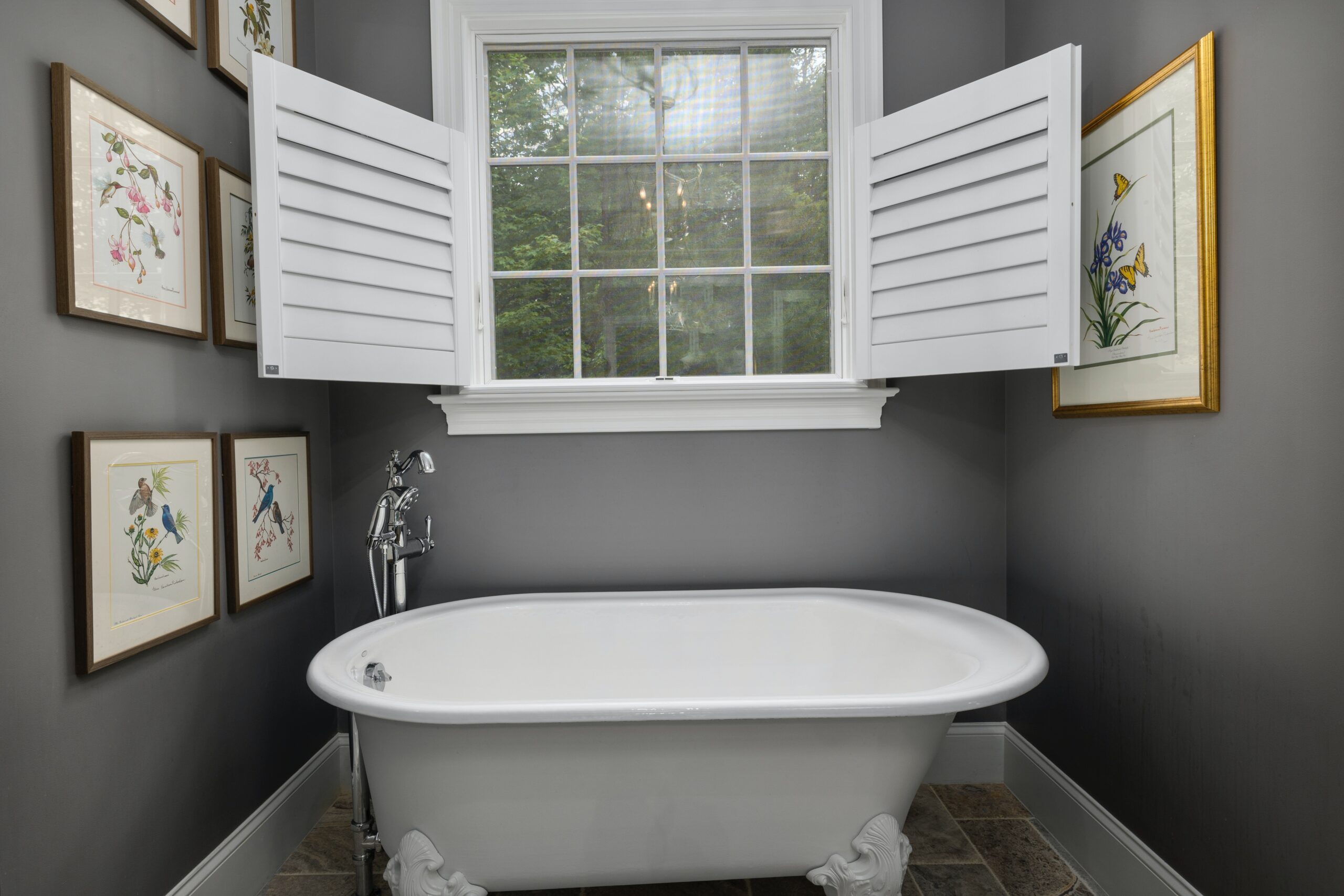
A freestanding bath is a statement piece that can elevate the design of any bathroom. When placed correctly, it not only becomes the focal point but also enhances the flow and atmosphere of the space.
Double Vanity unit: Sharing space, not personal grooming
When designing a bathroom for two, incorporating a double vanity unit can make mornings more harmonious. With individual sinks and ample counter space, each person can have their designated area to get ready without compromising on style.
Horizontal and vertical planes
When designing a bathroom layout, it’s important to consider both horizontal and vertical planes. This means thinking about the placement of fixtures and furniture in relation to the floor, walls, and ceiling. A balanced combination of these planes can create a sense of harmony and balance in the space.
Floor Planes
When it comes to the floor, you want to ensure that there is enough space for comfortable movement and that all fixtures are easily accessible. You may also want to consider incorporating non-slip flooring for added safety.
Incorporating the Latest Trends in Bathroom Layouts
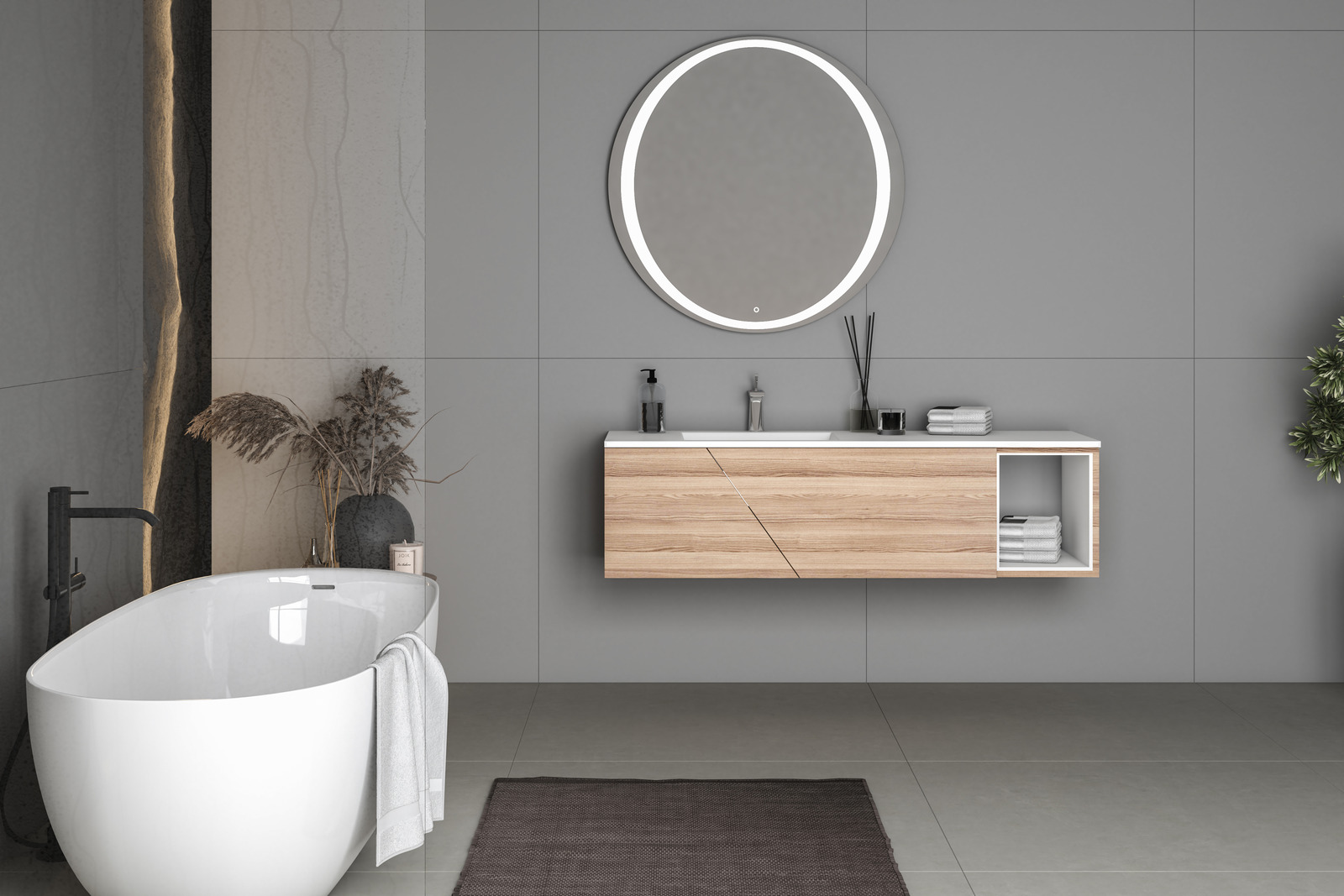
The world of bathroom design is not immune to trends. We’ll explore the latest and greatest in bathroom layouts to keep your space looking fresh and modern.
Sustainable and Eco-Friendly Design Choices
The burgeoning trend of sustainability has made its way into bathroom design. Low-flow fixtures, eco-conscious materials, and water-saving showers are just the beginning.
Smart Technology Integration
The bathroom layout of the future is now. From heated floors to smart showers that remember your temperature preferences, technology is transforming the way we experience our bathrooms.
Conclusion Bathroom Design
Crafting the perfect bathroom layout is a blend of art and science. By applying the principles and tips outlined in this guide, you’ll be on your way to creating a dream bathroom that is not only a joy to use but also a design marvel.
Remember, your bathroom is a highly personal space, so don’t be afraid to infuse it with your unique style.
